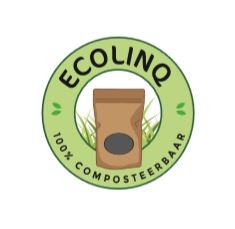
Difference between composting and biodegradable
What is the difference between biodegradable and compostable?
Biodegradable and compostable are two words that are often used interchangeably when talking about recycling. But there is a world of difference between these two terms. To understand them better we'll discuss them separately below.
Biodegradable
We often see the word 'biodegradable' on some of the products we buy, such as soap and shampoo. But what does that really mean? Anything that is biodegradable will break down quickly and safely into largely harmless compounds. But what makes something biodegradable? Anything plant, animal or natural mineral is usually biodegradable. However, they will degrade at different rates depending on the original material they are made of and the degree to which they have been processed. According to the American Society for Testing and Materials (ASTM), biodegradable substances are anything that breaks down as a result of the action of naturally occurring micro-organisms such as bacteria, fungi and algae. In principle, biodegradable products degrade in much less time than non-biodegradable products such as plastics. Biodegradable products can be much more than just plants, as most people assume. It can be paper products, boxes, bags and other items that are all made with the ability to degrade both quickly and slowly until they can be consumed at a microscopic level.
Compostable
Compostable means that a product is capable of breaking down into natural elements in a composting environment. Because it breaks down into its natural elements, it does not cause any damage to the environment. The degradation process usually takes about 90 days. The ASTM defines compostable products as anything that is broken down by biological processes during composting to produce CO2, water, inorganic compounds and biomass at a rate similar to other compostable materials and leaves no visible, distinguishable or toxic residue.
So what's the difference?
Looking at the definitions of the two terms, it is quite understandable why they are so easily confused, but there is a difference. While all compostable material is biodegradable, not all biodegradable material is compostable. While biodegradable material returns to nature and can completely disappear, it sometimes leaves behind metal residue; on the other hand, compostable materials create something called humus, which is full of nutrients and great for plants. In short, compostable products are biodegradable, but with an added benefit. That is, when they decompose, they release valuable nutrients into the soil, promoting the growth of trees and plants.
Read here why it is important to understand this difference
While biodegradable items refer to any material that breaks down and decomposes in the environment, compostable goods are specifically organic material that breaks down, with the end product having many useful applications, including fertilisation and improving soil health. Most importantly, compostable goods leave no toxic residue because they are already organic. Unlike compostable products, some biodegradable products can take several years to degrade and in some cases can even leave behind toxic waste.
For example, plant-based plastics are often labelled as biodegradable. Although they are intended to break down more easily than ordinary plastics and are safer for the environment, they can take just as long as ordinary plastics if the right environmental conditions are not in place.
While biodegradation is entirely dependent on the products being exposed to the right amount of moisture and temperature, compostable products will break down more easily despite external environmental factors.
When it comes to recycling, the terms biodegradable and compostable dominate in popularity and can cause confusion. Concerns from the composting industry, faced with materials that are claimed to be either biodegradable or compostable, led to the development of the European standard EN 13432, which lays down criteria for what is compostable and what can be called biodegradable. The American standard ASTM D6400-99 also contains similar standards.
Many items labelled "biodegradable" are not accepted by composting facilities because they take too long to degrade and/or will not fully decompose, thus disrupting the composting cycle. However, materials complying with the European or American standard will be effectively degraded in almost all composting systems.
Bron: Natures Path